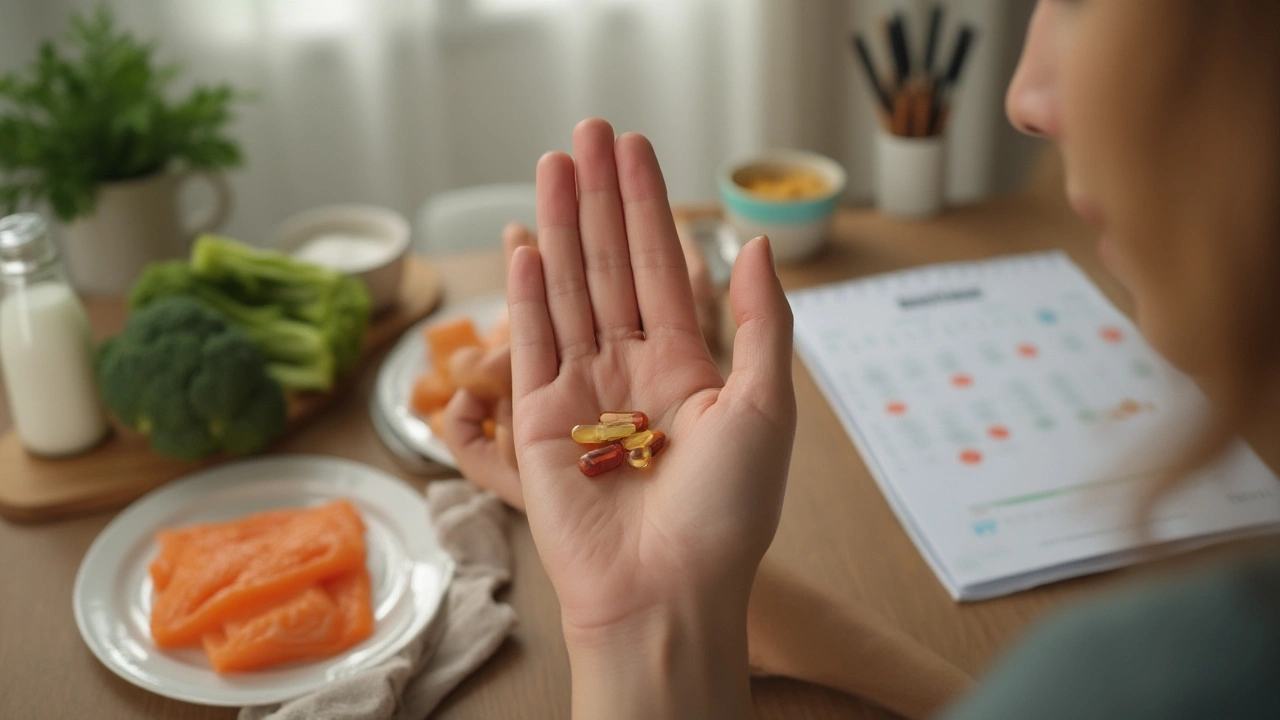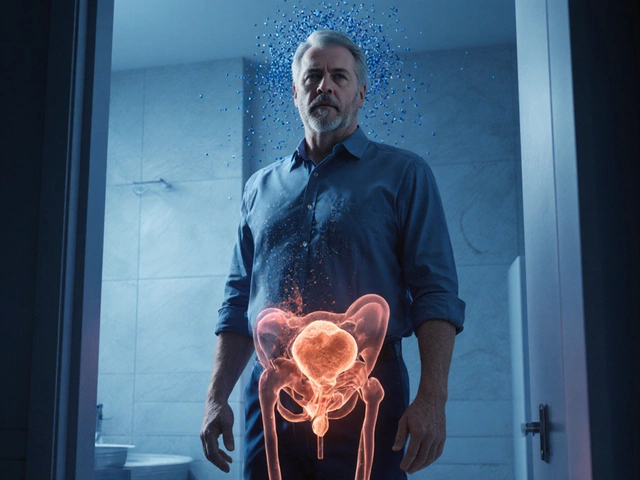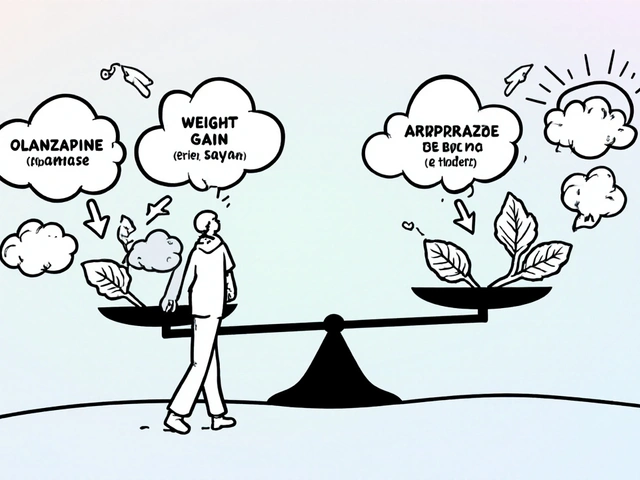
Imagine relying on a single pill so your bones don’t crumble and your heart doesn’t miss a beat. That’s the reality for folks taking Rocaltrol—officially known as calcitriol. This tiny capsule (some take the oral liquid) packs surprising punch, helping people manage complex health conditions when the usual vitamin D just won’t cut it. But what really gets me is the balancing act: this medicine can do wonders, but you have to get it exactly right, or your system can turn against you. That’s why Rocaltrol is prescribed with ultimate care—no guessing allowed.
What Is Rocaltrol and Who Needs It?
Here’s the gist: Rocaltrol is the active form of vitamin D3. Your body can usually turn sunlight, food-based D, or plain old supplements into the active stuff. But when your kidneys or parathyroid glands don’t cooperate, you’re stuck—your body runs low on calcitriol, and things go sideways fast.
Most people who end up with a Rocaltrol prescription have kidney issues. Think chronic kidney disease (CKD) or folks on dialysis. The kidneys’ job isn’t just urine—it fine-tunes your calcium and phosphorus with a hormone called calcitriol. Too little of this hormone? Bones get brittle, muscles cramp, nerves fizz, and calcium can end up in weird places like the skin or arteries. Not fun.
Here’s a starter set of conditions where Rocaltrol comes in:
- Chronic Kidney Disease (CKD), especially stage 4 or 5
- Dialysis patients
- Hypoparathyroidism (when the parathyroid gland stops working)
- Some rare genetic disorders that mess with calcium absorption
I remember a neighbor of mine, Greg, went through months of cramps, brain fog, and bone aches. His lab numbers—calcium and phosphate—were out of whack. His doc switched him from ordinary vitamin D to Rocaltrol. Within weeks, the improvement was clear. That’s the reality: for people like Greg, standard D supplements just bounce off, but Rocaltrol does what their bodies can’t manage anymore.
How Rocaltrol Works: The Science Behind the Scenes
Doctors rave about Rocaltrol for one main reason: it cuts out the middleman. See, most vitamin D products need to get activated by your liver and kidneys before you feel the effects. Calcitriol—the main ingredient in Rocaltrol—is already the active version. It plugs right into your body’s machinery: controlling calcium absorption in the gut, stopping calcium loss from bones, and telling the parathyroid glands to chill out.
Here’s a chart breaking down some quick facts about vitamin D activation and what happens with or without Rocaltrol:
| Stage | Healthy Body | CKD or Parathyroid Issues | With Rocaltrol |
|---|---|---|---|
| Vitamin D Intake | From food or sun | Still from food or sun | Rocaltrol provides active form |
| Liver Conversion | D2/D3 → Calcidiol | Normal in most cases | Not needed (already active) |
| Kidney Conversion | Calcidiol → Calcitriol | Blocked/delayed/problematic | Bypassed |
| Effect | Proper calcium absorption, healthy bones, stable nerves | Low calcium, weak bones, cramps | Restoration of normal system |
This shortcut means people with serious kidney or parathyroid trouble can finally get their calcium balance and bone health back under control. It’s pretty special—and why you can’t just swap over-the-counter vitamin D for Rocaltrol.
But here’s where things get intense: Rocaltrol is powerful. Take it as directed, and it keeps bones strong and nerves calm. Take too much? Calcium shoots up. When that happens, you can end up with kidney stones, faster artery hardening, and, in extreme cases, dangerous heart rhythms. Actually, this is why folks have to get their blood checked regularly—so their doctor can tweak the dose as needed.

Typical Dosages, Monitoring, and Practical Tips
Nothing about Rocaltrol happens on autopilot. Doctors start with a low dose, often just 0.25 micrograms per day (or every other day), because bodies react differently. Sometimes, tiny folks or the frail elderly need even less, while bigger or sicker patients need more. Dose adjustments are made slowly—sometimes over weeks—based on blood and urine tests.
Let’s get specific about what the doctor is watching:
- Serum calcium levels
- Serum phosphorus levels
- Parathyroid hormone (PTH)
- Creatinine/Glomerular filtration rate (to check kidney function)
- Sometimes, urine calcium (to check for stone risk)
There’s a strict rhythm here: Start, test, adjust, repeat. The number one priority is keeping calcium (and phosphorus) in a safe window, while knocking down the parathyroid hormone if it’s out of control.
I know someone on Rocaltrol who speeds up lab visits before family holidays—she wants to be sure her numbers are solid if she’s tempted by cheese platters or ice cream. That’s smart, because certain foods can push things upside down. Those on Rocaltrol are often told to manage (not eliminate) dairy, fortified juices, nuts, and certain fish if their calcium is running high.
Here’s a golden rule: Never double up if you miss a dose. Just skip and get back to normal. And keep your pharmacy in the loop if you add new meds—Rocaltrol can tangle with thiazide diuretics, magnesium-containing antacids, and even some cholesterol drugs.
Practical tip: Rocaltrol is best taken with or just after a meal—this helps your gut pull in the calcium smoothly. And it’s sensitive to heat and moisture, so don’t stash it next to your shower or oven.
Potential Side Effects and Signs of Trouble
It’s rare for people to feel much right away when starting, but when changes show up, they’re usually from too-high calcium. Classic warning signs look like:
- Nausea, vomiting, or lack of appetite
- Constipation and belly pain
- More thirst, peeing a lot
- Confusion, sluggishness, or mood swings
- Itchy skin or muscle pain
Those sound random, but together point straight at high calcium. Ignore them, and the dominoes tip: kidneys and heart get into trouble, fast. The other side of things is too little Rocaltrol—then you’re back with bone pain, weak muscles, twitchy nerves, and in some cases, broken bones. It’s all about hitting the sweet spot.
There’s a second shadow with this med: phosphorus. Rocaltrol can send phosphorus levels climbing—which is why doctors might suggest taking phosphate binders with meals or cutting back on phosphorus-rich foods like processed cheese, red meats, colas, or fast food. My friend Tom joked that his kidney doctor’s food advice was stricter than his gym coach’s. But hey, it works.
Pets in the house? Don’t leave Rocaltrol anywhere a curious dog like Kepler (my best pal) could sniff it out. Even a single capsule can be dangerous for a pet—severe calcium overdose hits them hard.
Here’s a table with the top side effects, how common they are, and what action to take:
| Side Effect | How common? | What to do |
|---|---|---|
| Nausea/vomiting | Occasional | Call your doctor |
| Loss of appetite | Occasional | Monitor, report if lasts |
| Constipation | Common | Increase fluids, call doctor if severe |
| Confusion/sluggishness | Rare | Seek medical help |
| Kidney stones | Uncommon | Report pain, blood in urine |
If you run into any of these, always check in with your healthcare team.
Bottom line, Rocaltrol (aka calcitriol) is a lifeline for people whose bodies can’t handle vitamin D the usual way. Used right, it can make all the difference—from bones and nerves to daily energy and long-term health. But it’s no DIY project: with regular labs, smart habits, and teamwork between you and your doctor, you get the benefit minus the risks. If you’re ever near a person sorting their daily doses, remember there’s real science and care behind every tiny capsule.




8 Comments
Rocaltrol is one of those meds that seems small but carries a huge weight in people's lives
The pharmacokinetic bypass of renal activation is clinically significant. Calcitriol directly binds to nuclear vitamin D receptors without requiring 1-alpha-hydroxylation. This is why standard cholecalciferol fails in CKD patients. Dosing must be titrated against serum calcium every 2-4 weeks initially. Hypercalcemia risk is real and underappreciated by patients
I know someone who took this and it changed everything but also made her feel like a lab rat constantly getting poked and prodded and having to avoid cheese and nuts and ice cream like it was poison and she used to love ice cream so much and now she can't even have a spoonful without checking her calcium levels and her husband says she's become this quiet ghost of herself just counting every bite and every pill and I don't know if the bones are stronger but her spirit feels so drained
Big shoutout to the doc who caught Greg’s case early - this stuff is magic when it’s dialed in. Just don’t skip the bloodwork. I’ve seen people try to wing it and end up in the ER with calcium levels that could power a small city
Rocaltrol isn’t just a pill - it’s a lifeline wrapped in a tiny capsule that says ‘you’re not broken, just delayed’. It’s the quiet hero in the medicine cabinet that lets people walk again, laugh again, live again. And yeah, it’s finicky as hell but so worth the hustle
The article is thorough but reads like a pharmaceutical brochure with emotional padding. The real issue is access - many patients can’t afford the brand, and generics are inconsistently available. Also, the mention of pets is cute but trivializes systemic healthcare gaps
As a nephrology nurse in Mumbai, I’ve seen calcitriol transform dialysis patients - but only when monitored with precision. In resource-limited settings, we often lack frequent lab access. We teach families to watch for early signs: lethargy, loss of appetite, dry mouth. A single missed dose can cascade. The science is sound, but the system often isn’t. We need better supply chains and patient education - not just pamphlets
How is this even considered groundbreaking? Calcitriol has been standard of care since the 1980s. The article’s sentimental anecdotes about Greg and Tom are emotionally manipulative. Real medicine doesn’t need heartwarming stories - it needs rigorous data, not poetic fluff wrapped in HTML tables